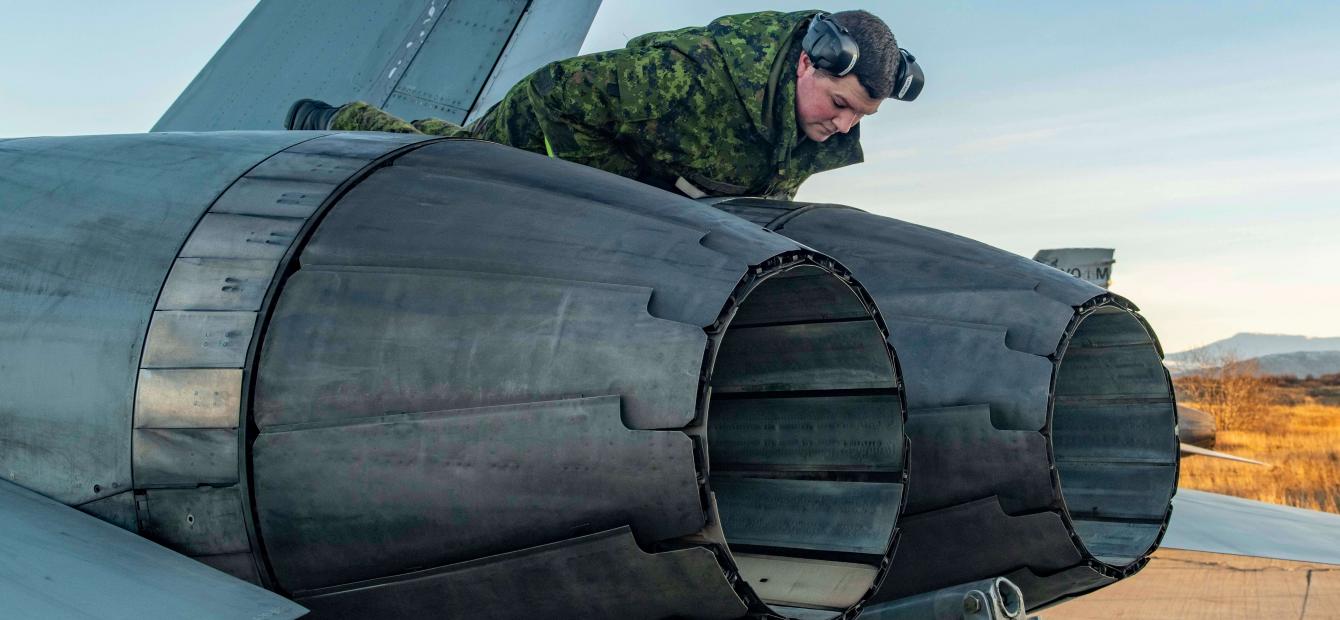
Does Europe Risk Oversophistication of Air Power?
While many different countries in Europe are currently receiving or awaiting the first deliveries of the F-35 fighter aircraft to their air forces, the trajectory of development of the next generation of fighter aircraft is already being defined. What sets the current European evolution apart is the particular emphasis on very advanced platforms drawing on stealth, sensor and networking capabilities that push the boundaries of technological abilities. Despite the great capabilities, these future generations come with the unexpected risk of oversophistication: excessive reliance on advanced platforms, reducing efficiency of air power.
Within Europe, several alliances have been taking shape around the development of so-called ‘6th generation’ fighter aircraft. Most recently, the defence ministry of Italy officially joined Sweden and the United Kingdom in the design and production of the next-generation fighter concept titled ‘Tempest’.
This agreement essentially commits all major fighter aircraft producing nations in Europe to one of two ‘6th generation’ projects that could end up defining the direction of European air power over the next 60 years to come. Prior to the British-Swedish-Italian alliance, a separate group composed of France, Germany and Spain had already joined forces in a separate project known as the ‘Future Combat Air System’ or FCAS.
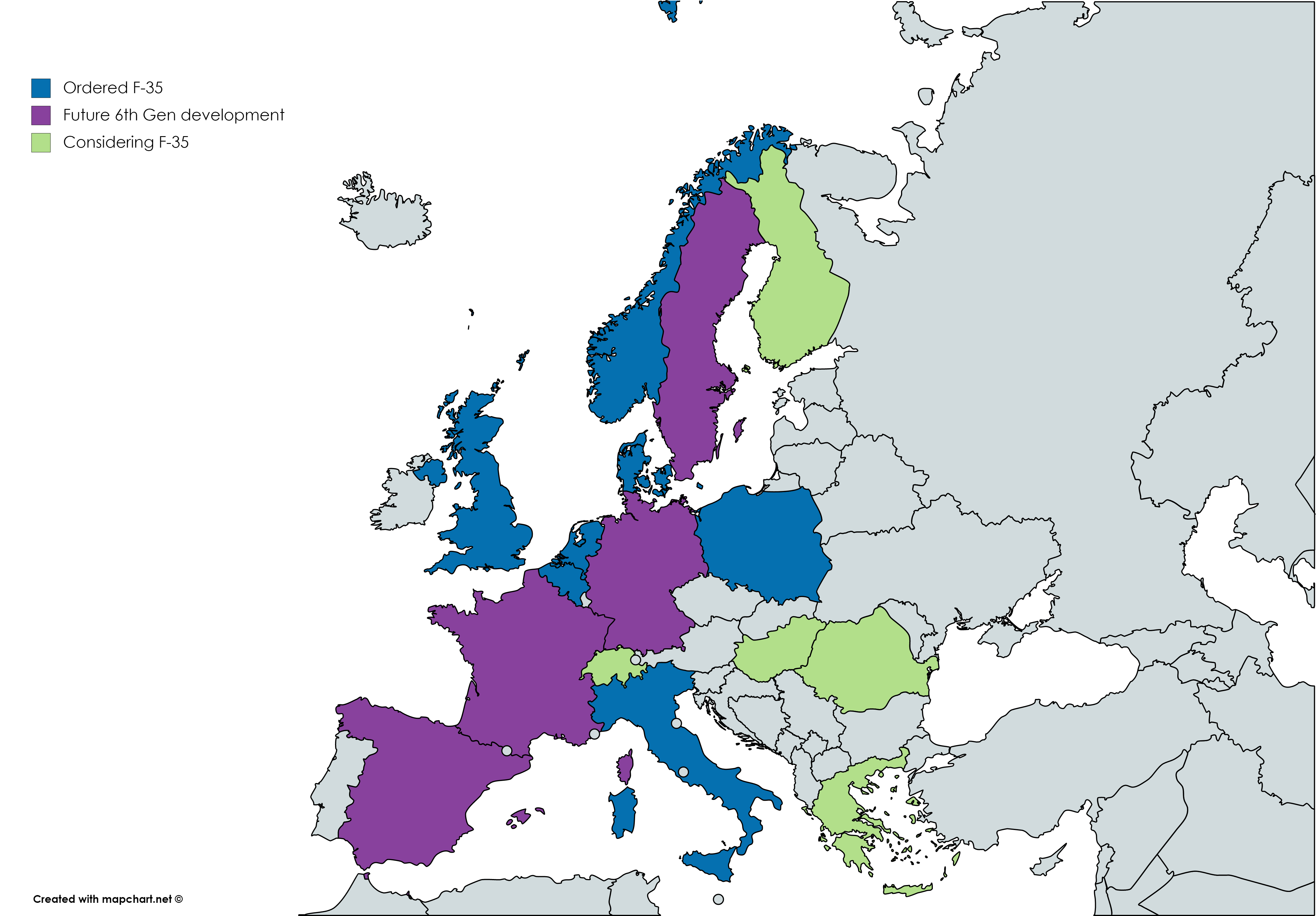
European air forces are not simply modernizing air power, they adopt a doctrine based on technological dominance
The transition to new types of aircraft itself is not exceptional, however, and neither is the progression towards higher standards of technology as a part of that. As older fleets reach the end of their lifespan and air forces seek to remain competitive, the acquisition of latest generation fighters is only logical.
What sets the current European evolution apart is the particular emphasis on very advanced platforms drawing on stealth, sensor and networking capabilities that push the boundaries of technological abilities. The European air forces are not simply modernizing their air power capabilities, they are making the distinct choice to adopt an air power doctrine based on the technological dominance, or ‘overmatch’, of individual platforms.
This choice has been a controversial one, due to the costs associated with operating such advanced fighters and the design challenges faced in implementing cutting edge technology. The F-35 program has been an example of how achieving technological overmatch complicates the design and production of an aircraft. Even as it reaches operational status, many systems remain unfinished.
It should be noted, however, that this longer process of maturing will eventually result in a highly capable fighter aircraft. Technology based on advanced stealth technology and powerful sensor- and networking capabilities is starting to define future requirements for competing and subsequent fighter generations. Therefore, the more important questions converge not on the validity of its design, but rather on the impact such systems will have on a strategic level.
Diversification and limitations of European scale
The strategic implications of sophisticated aircraft are very different in Europe than they are in the air forces of great powers such as the United States, Russia, or China. Since European air power consists of a wide variety of separately managed air forces, they face a number of scale-related challenges not present in other powers. The fact that strategic planning and acquisition occurs at the individual state level provides less of an ability to implement a truly pan-European air power strategy.
The most significant challenge that European states face compared to the United States, which is going through a similar push for wide adoption of advanced fighter aircraft, is a lack of capacity for diversification. Individual European air forces are much more limited in scale, forcing them typically to operate only one - or two in case of the larger European military powers - main types of fighter aircraft at a time.
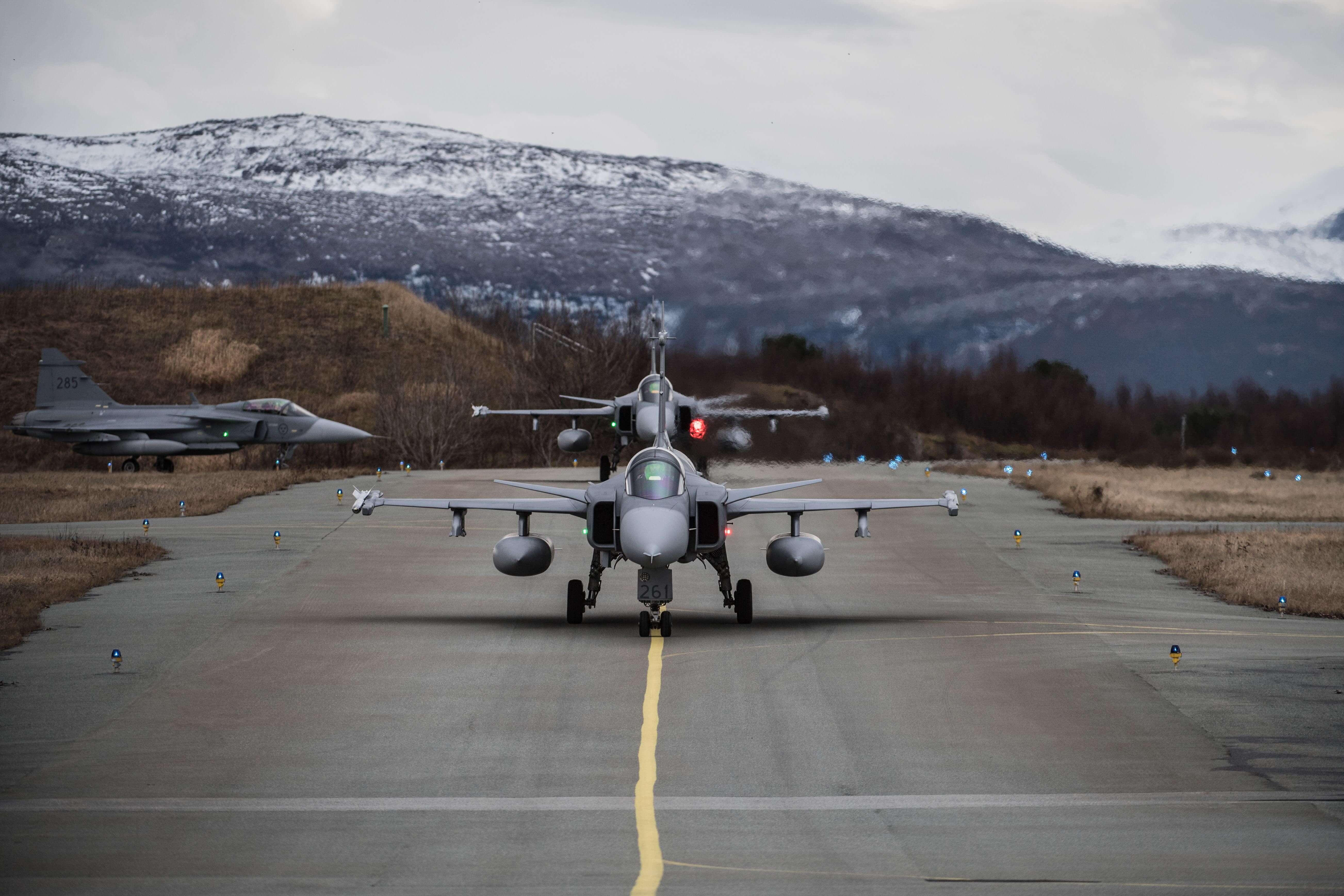
In addition, larger air forces such as that of the United States operate a much larger fleet of support aircraft for dedicated roles which, in most European fleets, are forced onto their main fighter fleet.
The ability for more advanced aircraft to leverage technology to cover this wide variety of specialized tasks ranging from surveillance to electronic warfare, makes them all the more attractive for constrained air forces. But multi-functionality comes at a cost. This is most visible in how most countries adopting these advanced aircraft are scaling down the size of their air forces. The aircraft provide greater capabilities than the ones they are replacing, but smaller fleets also present a less flexible tool in actual deployments.
On the individual level of European states, these concerns are fairly limited. The importance of European air power strategy only really emerges at the level of international organizations or broader geopolitical intent. The main levels of activity here are the European segment of NATO, as well as an intensifying interest to define a military capability at the European Union level.
Great powers maintain resilience and bulk capacity that is difficult to achieve through fleets solely composed of top tier fighter aircraft
A requirement to balance air power against that of other great powers informs the need for effectiveness across combined European air forces. This balancing requirement is geared towards Russia and by extension even China at a NATO level, but also towards the US in the context of Europe’s quest for independence from US military capabilities.
Great powers can leverage diversified air forces towards greater effectiveness. While they are all developing and operating highly advanced platforms, they also maintain fleets of less complex aircraft that are able to fulfill tasks effectively in less contested airspace or under the protection of more advanced fighter aircraft.
This not only allows a more economical application of air power in many cases, but also provides a degree of resilience and bulk capacity that is difficult to achieve through fleets solely composed of top tier fighter aircraft.
The United States had initially planned to replace nearly its entire fighter fleet with variants of the F-35. Instead, it continued production and service-life extensions of less sophisticated aircraft like the F-15 and A-10 in order to sustain a more balanced fleet that it can operate at a more reasonable cost.1
Oversophistication in low intensity conflict
The clearest challenge to the value proposition of air power based entirely on advanced stealth fighters comes in the shape of low intensity conflicts. Military operations working towards peacekeeping, counterterrorism and counterinsurgency objectives typically take place in uncontested airspace.
The main drawback in these scenarios is the costs associated with their use, which are substantially higher than those of the aircraft they are replacing. These costs may be legitimized in operations in contested airspace, where stealth and advanced electronic warfare capabilities offer a critical edge over adversaries, but in most low intensity operations this is not the case.
The size of European fighter fleets is seen more than halving
For example, the United States has deployed F-22 fighter aircraft to Afghanistan in 2017, where they struck a static drug lab linked to the Taliban at an estimated cost of $400,000.2 The cost of this mission would have been much lower had less sophisticated aircraft been used, which would face no limitations in achieving the same mission objectives.
Besides the purely cost based disadvantage, the shift towards smaller and more advanced air forces also reduces the aircraft capacity available as a whole. The fact that the size of European fighter fleets is seen more than halving, means that the upgrade towards more sophisticated aircraft will result in less fighter aircraft being available for sustained operations in low-intensity conflicts.
Oversophistication in peer to peer conflict
Advanced aircraft provide significant comparative advantage in peer to peer conflict, where they are expected to guarantee air superiority or conduct strikes by penetrating heavily contested airspace.
Stealth technology provides a significant protection against enemy fighter aircraft as well as ground based air defenses. Advanced sensors and networking capabilities also help pilots gain more awareness of complex combat environments.
However, while the 5th generation aircraft and their successors will certainly be the more capable and decisive in future peer to peer conflicts, their advantages are also directly associated with risk.
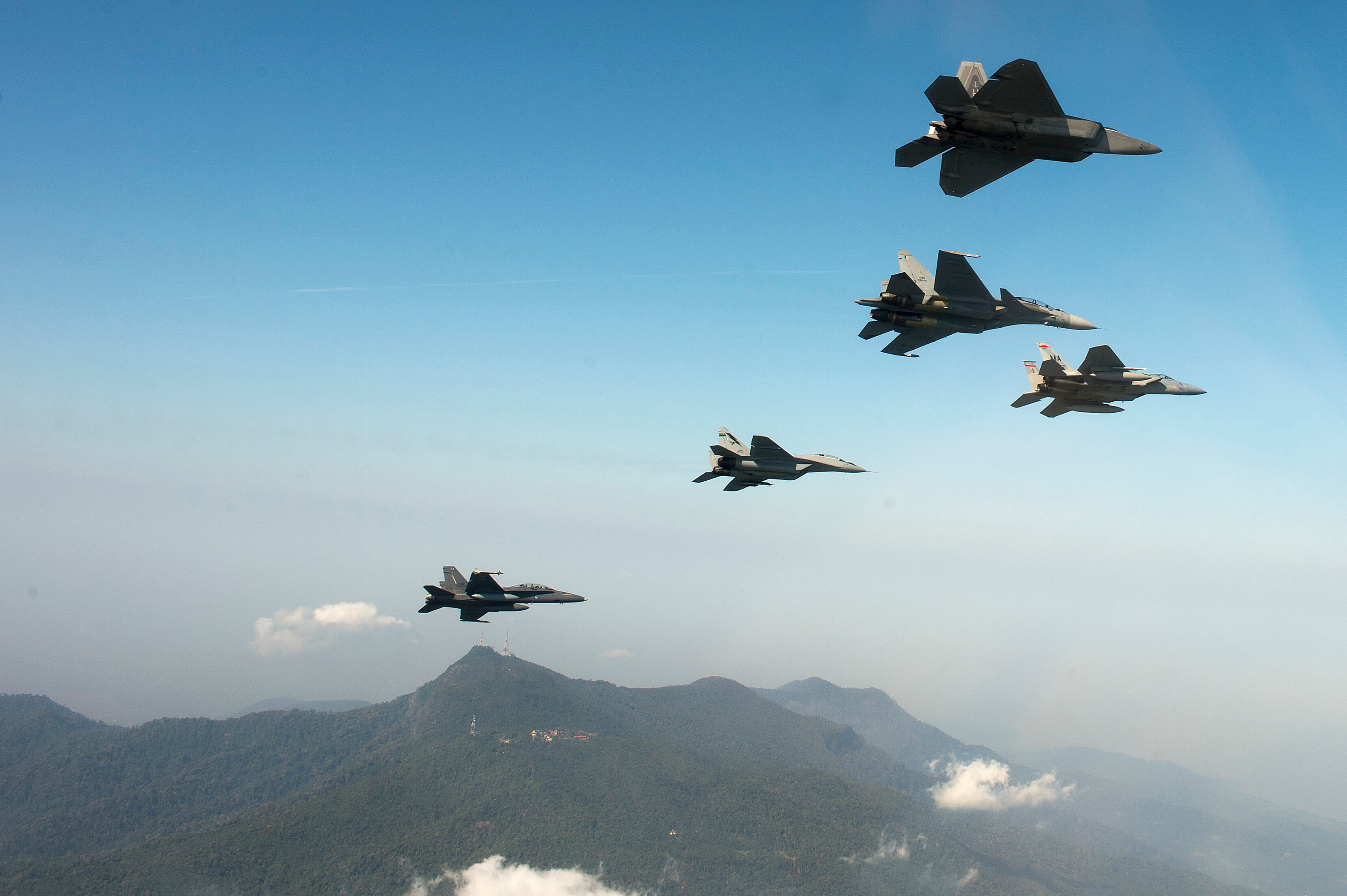
One of the most critical issues is the sortie rate: the number of flights an aircraft can perform within a given timeframe.3 Higher sophistication of aircraft increases the maintenance burden between sorties significantly.
Whereas previous generations of fighter aircraft were able to conduct two or more sorties per day, modern aircraft such as the F-35 may only be able to achieve a single sortie per day or even per every two days depending on mission duration.
This drop in sortie rate can have a significant effect on the ability to project air power. Lower sortie rates translate into a substantial reduction in actual weapons deployed against targets, particularly when aircraft carry less payload to enable the full potential of stealth technology.
Regardless of sortie rates, these newer aircraft still provide a greater degree of survivability against capable adversaries. This is an important attribute, and the value of being able to limit attrition in a protracted conflict should not be underestimated.
Oversophistication of air power might actually reduce resilience to attrition in protracted conflict, something which is key to achieving victory
If such attrition occurs, however, the relative effect on an operational scale becomes greater as well. The loss of individual more advanced aircraft as part of a smaller overall fleet represents a greater relative loss than that of less sophisticated aircraft available in greater numbers. As such, oversophistication of air power might actually reduce resilience to attrition in protracted peer to peer conflict, something which is key to achieving victory.
Managing oversophistication
At this point, an oversophistication of European air power has not yet materialized. Current acquisitions and plans for future developments do point in this direction, but there are still many opportunities to manage this process so that its effects can be mitigated or even avoided.
To do so, however, would require a significant degree of forward planning beyond the level of individual air forces, with either NATO or EU structures providing a platform for a common strategy encompassing elements of development, acquisition and operational practices.
To maintain diversification, 4th generation fighters could be sustained alongside more sophisticated platforms
With most countries already locked into the transition towards operating more sophisticated aircraft at some point over the next 25 years, the potential for true diversification in the form of operating multiple classes of fighter aircraft across Europe is rapidly closing.
In order to maintain a degree of diversification within the better funded and operationally active air forces, the currently operated 4th generation fighters could be sustained alongside more sophisticated platforms.
This only presents a short term fix, however, as limitations to the lifespan of such aircraft will at some point require the development or acquisition of new less sophisticated fighter aircraft. In combination with the prohibitive cost of operating more advanced aircraft, such an approach is a financially intensive one that may not be an option for most countries.
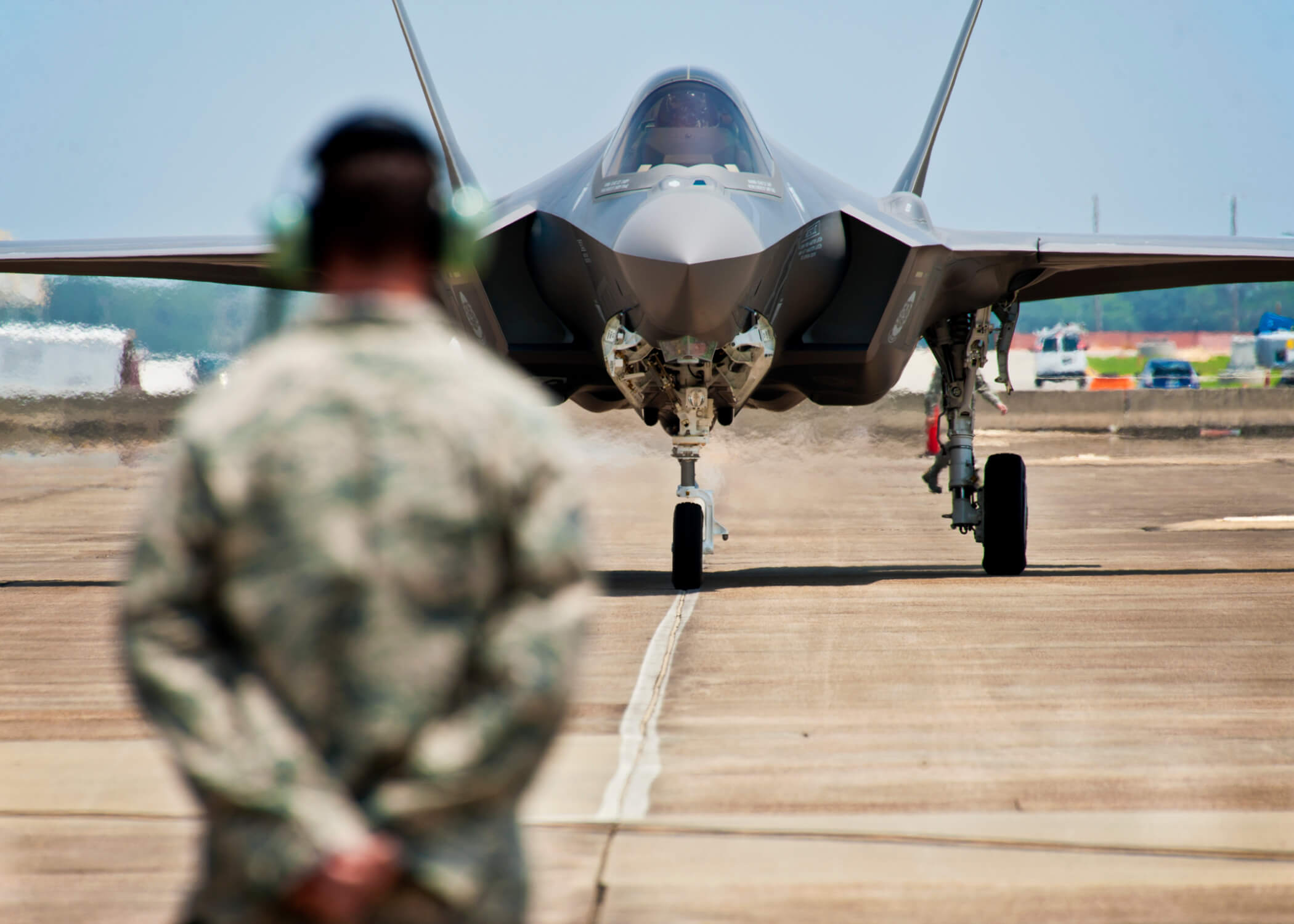
There are still a number of Central European air forces that continue to operate 4th generation fighters without immediate plans to transition into more sophisticated fleets. These are for the most part air forces that are particularly limited in terms of both financial and operational capabilities, and present only a limited capacity relative to the scale of European air forces.
Making sure these air forces would be able to play a more active part in European operations abroad, could provide some relief in the future. In addition to this, a select number of air forces - particularly France, Germany and the United Kingdom - may have the necessary capacity and budgetary resources to continue operating a multi-platform fleet in the future.
Such an approach does require a great degree of dependency between European air forces. Whether conducting operations under NATO or EU flag, a commitment of forces is still based a voluntary decision of national governments. With only select countries having the ability to provide an unsophisticated capacity, there is still a significant risk that countries with exclusively advanced fleets would be forced to provide the bulk of air power.
Europe will have to plan its future capabilities at the same level of coherence as that of great powers
Barring the ability to support true diversification across Europe, there are still options to reduce cost and capacity constraints using unmanned platforms. Either in the shape of independently operating UAV, or ‘loyal wingman’ type systems that operate alongside advanced aircraft, adding capacity in a low-cost and expendable manner can provide some stretch in air power capabilities.
At this point, however, affordable unmanned systems are still limited in their capabilities compared to existing manned platforms, and may in fact not provide a cost-effective alternative to operating light attack aircraft or 4th generation multirole fighters.
With several options open to avoid or at least limit the effects of oversophistication in European air forces, military planners and policymakers should still be able to maximize Europe’s air power over the next decades. Doing this, however, will require clear and rational consideration of the risks and opportunities presented.
If Europe truly wishes to establish itself as an independent actor on the international stage, or even just a reliable component within NATO, it will have to plan its future capabilities at the same level of coherence as that of great powers such as the United States, China and Russia.
- 1Alec Mollenhauer, ‘United States Air Force Turns to F-15 as F-35 Troubles Continue’, Aeronautics Online, July 23, 2019
- 2Kyle Mizokami, ‘An F-22 Just Blew Up a Drug Lab During Its First Combat Mission in Afghanistan’, Popular Mechanics, November 21, 2017
- 3John Stillion, David T. Orletsky, ‘Airbase Vulnerability to Conventional Cruise-Missile and Ballistic-Missile Attacks - Appendix B: Sortie-Rate Model’, 1999




0 Comments
Add new comment